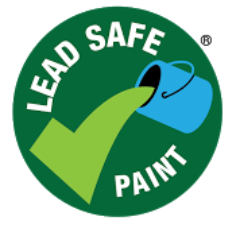Parents can take some basic steps to ensure children are not exposed to lead in the home.
- Regularly wet-mop floors and wet-wipe window components. Household dust is a major source of lead exposure, especially where lead paint has been used in the past. You should therefore wet-mop floors and wet-wipe windowsills and other horizontal surfaces every 2-3 weeks. These surfaces should be kept clean. Take off shoes when entering the house to prevent bringing in lead-contaminated soil from outside.
- Repair chipping or peeling paint on painted surfaces, and ensure that this is done in a way that does not disperse paint chips or paint dust.
- Any renovation efforts where lead paint is present should only be undertaken by qualified painters who take every precaution to avoid dispersing lead chips and lead dust, and who carefully clean up at the end of the job.
- Children and pregnant women should not and should not be present in housing undergoing renovation, nor participate in activities that disturb old paint or in cleaning up paint debris after renovation work is completed.
- If you conduct a renovation or repair project where lead paint is present be sure to 1) contain the work area with plastic sheeting so dust and debris do not escape from the area; 2) avoid renovation methods that create a lot of dust by using water to mist areas before sanding or scraping, scoring paint before separating components and pulling apart components rather than breaking them; 3) clean work areas thoroughly on a daily basis and when the project is complete. For more information, please see:
https://www.cpsc.gov/PageFiles/121915/renovateright.pdf - Regularly wash children’s hands and toys. Hands and toys can become contaminated from house-hold dust or exterior soil. Both are known lead sources.
- If possible, prevent children from playing in bare soil that may have been contaminated with lead.
